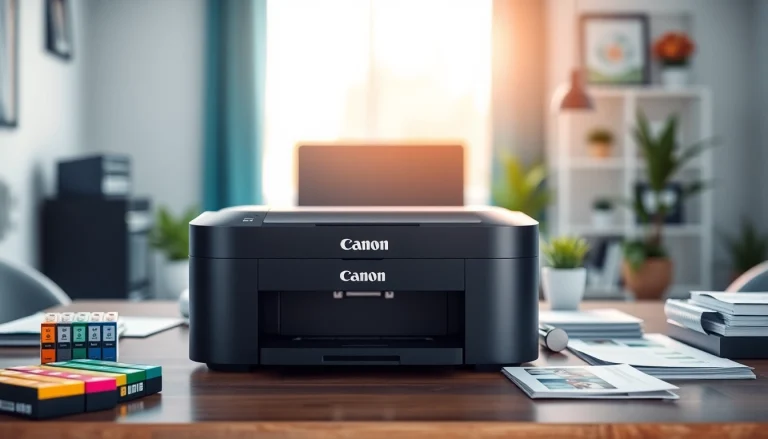
Understanding the Importance of Icons in Today’s Digital Age
In our modern, visually driven world, icons play a crucial role in digital communication and design. From mobile applications to websites, icons help convey information swiftly and effectively, bridging the gap between technology and users. Understanding the importance of icons can greatly enhance the user experience, creating design solutions that are not only aesthetically pleasing but also functionally effective. Properly implemented icons can improve navigation, comprehension, and overall satisfaction on digital platforms.
Defining Icons and Their Roles
Icons are graphic symbols that represent complex ideas, functions, or objects in a simplified form. They serve as visual shortcuts that communicate meaning quickly and universally. For example, a trash can icon typically indicates deletion, while a magnifying glass suggests a search function. The primary role of icons is to facilitate user interaction with technology in an intuitive manner.
The Impact of Icons on User Experience
The effectiveness of an application, website, or print design is often dictated by its user experience (UX). Icons can significantly influence this by enhancing usability and accessibility. Well-designed icons lead to quicker recognition of functionalities, reducing cognitive load. Icons also contribute to a site’s aesthetic, supporting the message the design seeks to communicate. Research indicates users are more likely to engage with interactive elements when icons are employed effectively, enhancing overall satisfaction and retention.
Icon Trends in Modern Design
As design evolves, so do the trends surrounding iconography. Current trends emphasize minimalism, where designers favor simpler, flatter icons that align with overall UI/UX design philosophies such as Material Design. Other emerging trends include the use of vibrant colors and customizable icons, along with the integration of animations that add a layer of interactivity and engagement. By understanding these trends, designers can create relevant, up-to-date designs that resonate with their audiences.
Types of Icons and Their Applications
Flat Icons vs. Three-Dimensional Icons
Icons can be broadly categorized into flat and three-dimensional (3D) styles. Flat icons emphasize simplicity, utilizing minimalistic designs and vibrant colors without gradients or shadows. This style aligns well with modern web design principles, making content easier to read and comprehend.
In contrast, 3D icons incorporate depth, textures, and highlights, likely appealing in more playful and immersive design contexts, such as gaming or interactive applications. Both styles have their merits, and the choice between them often depends on the target audience and context of use.
Material Icons and Their Unique Features
Material Icons are part of Google’s Material Design system, offering a standardized approach to iconography across platforms. These icons are created based on principles of physics, depth, and light, giving them a more tangible presence. Material Icons often include a variety of sizes and weights to maintain visual flexibility, ensuring coherent branding across different applications while enhancing user interaction through familiar shapes.
Custom Icons for Branding
Custom icons can significantly strengthen a brand’s identity. By creating unique icons that reflect brand values and ethos, businesses can differentiate themselves in a crowded market. For instance, companies like Airbnb and Apple successfully employ custom iconography that resonates with their core identities. Implementing a consistent icon set throughout a brand’s platforms reinforces brand recognition, elevating user experience and loyalty.
Designing Effective Icons
Key Principles of Icon Design
Effective icon design hinges on several fundamental principles:
- Simplicity: Icons should be easily recognizable and devoid of unnecessary complexity. The more straightforward the shape, the easier it is for users to identify its function.
- Consistency: Maintaining visual consistency across icons reinforces coherence, making it easier for users to navigate and understand.
- Scalability: Icons must be designed to function well at various sizes. They should be legible both in small contexts (like mobile screens) and larger formats (like posters).
- Contextual Relevance: Design choices should consider the specific context and audience for which the icons will be utilized, ensuring they are culturally appropriate and relatable.
Choosing the Right Color Palette and Style
The color palette and style of icons significantly influence their effectiveness. Different colors evoke various perceptions and feelings; thus, selecting colors that align with the intended message and audience experience is essential. For example, blue commonly signifies trust and professionalism, whilst red can indicate urgency or caution.
Moreover, keeping a coherent style—whether flat, outlined, or filled—ensures that user experience is not disrupted by inconsistent visual elements.
Tools and Software for Icon Creation
Designing icons can be accomplished through various tools and software tailored for graphic design. Adobe Illustrator is a staple for professional designers due to its vector-based capabilities, which allow for high customizability and scalability. Other popular options include Sketch, Affinity Designer, and Figma, which offer collaborative features ideal for teams. Additionally, platforms like Canva provide user-friendly interfaces for beginners looking to create simple icons.
Best Practices for Using Icons in User Interfaces
Placement and Sizing Considerations
The effectiveness of icons does not solely rely on their design but also on their placement and size within a user interface. Icons should be strategically positioned in positions that optimize visibility and minimize user effort. Common placements include next to relevant text labels or within buttons for immediate recognition. Size matters too; icons should be large enough to be clearly visible without overwhelming adjacent content or creating a cluttered interface.
Accessibility Standards for Icon Usage
Icons must meet accessibility standards to ensure inclusivity for all users. This includes providing textual descriptions for icon functions (via alt text) for screen readers and ensuring color contrasts are sufficient for users with visual impairments. Designers should also consider using familiar symbols that a wider demographic can understand, further enhancing accessibility in digital design.
A/B Testing Icons for Improved Engagement
Engagement metrics can be significantly influenced by icon design and placement. Running A/B tests can help ascertain which icons perform better based on user interaction data. By testing different icon styles or positions, designers can gauge engagement levels, conversion rates, and overall user satisfaction, allowing for informed adjustments that enhance overall UX.
Future Trends in Iconography
The Rise of Animated Icons
Animated icons are quickly becoming a staple in modern design, providing an engaging visual experience that static icons cannot match. The introduction of subtle animations can help communicate functionality or guide user actions. Designers are increasingly using animation to create delightful interactions that captivate users, drawing them into the experience.
Integration of Icons in Augmented Reality
As augmented reality (AR) continues to evolve, the use of icons within AR experiences is emerging prominently. Designers are tasked with creating icons that can be recognizable in 3D spaces, which adds a layer of challenge and excitement. This integration enhances user interaction with the physical environment, thus reimagining how icons convey information in real-time.
Predictions for Icon Design Trends in the Next Decade
Looking ahead, the future of icon design will likely embrace even greater simplicity and personalization. As artificial intelligence continues to advance, we can expect more adaptive iconography—icons that change based on user preferences and behaviors. The focus will remain on clarity and accessibility, ensuring icons not only serve their functional purpose but also enhance user experiences across diverse platforms.






